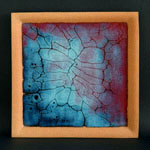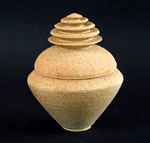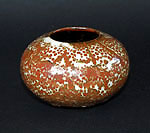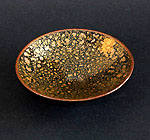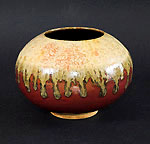Gallery
Copyright © 2005-2007 - Atelier du Roc d'Arguille
The typical bluish effect of this glaze is due to the optical scattering of the light
Song dynasty potters (960-1279 after J.C) gave us wonderful samples of their work, that prove their incredible know-how to produce this tricky glaze.
A copper slip brushed on the body before applying the glaze gives the purplished red colors..
Song dynasty potters (960-1279 after J.C) gave us wonderful samples of their work, that prove their incredible know-how to produce this tricky glaze.
A copper slip brushed on the body before applying the glaze gives the purplished red colors..
Raw stoneware boxes, Far East inspired and high-fired. Only the inner side is glazed, allowing the body to be just flame-colored during the firing.
The kaki name refers to the red orange color fruit of the persimmon tree, which originates from Asia.
The color is due to a quite important quantity of iron oxide in the glaze.
This glaze can be applied alone or as an underlayer.
The color is due to a quite important quantity of iron oxide in the glaze.
This glaze can be applied alone or as an underlayer.
What a funny name for a glaze ! The oil spot is a special effect that appears when the iron oxide bubbles and boils around 1200°C.The result is a black glaze with silvery or rusty spots.
Can you imagine that chinese potters could already do that thousand years ago ?
Can you imagine that chinese potters could already do that thousand years ago ?
Vegetable ashes are full in useful minerals for the glaze formation. In particular, hay ashes, once molten, become a really nice glaze, without the need to add anything.
This kind of ashes and also straw ashes are well designed to provide nucleations glazes.
